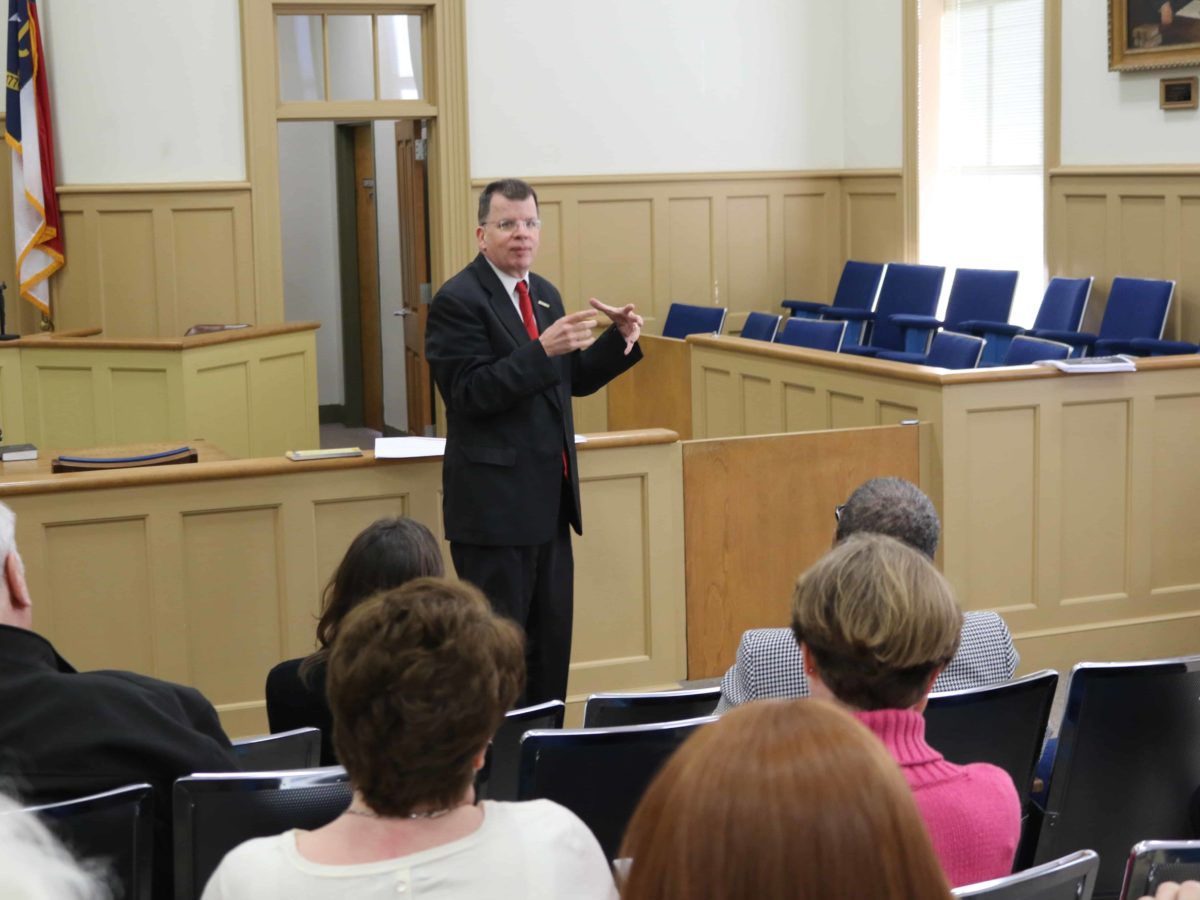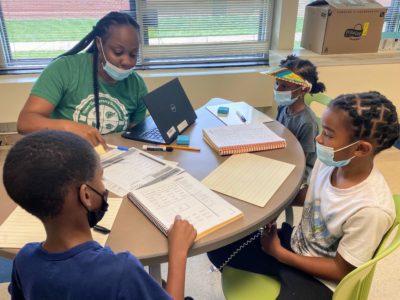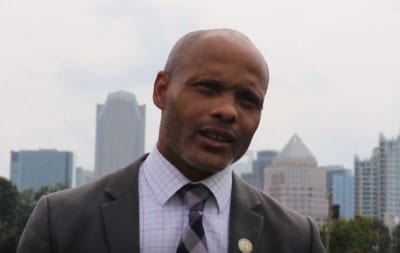
After the General Assembly allocated about $200 million in December to address Hurricane Matthew and wildfire damage and recovery, the legislature asked statewide grantsmaking organization Golden LEAF to make sure a portion of those funds were distributed to communities as soon as possible.
Golden LEAF — along with the Association of County Commissioners — held a meeting Friday in Elizabeth City’s downtown courthouse to give updates on where state disaster relief funding stands and if and how one can apply for Golden LEAF’s $25 million worth of grants. Five million of that is to help small businesses. The Department of Commerce received $10 million from the state, which will be given out through the same application.
These grants are designed to assist local governments with the repair, replacement, and construction of infrastructure due to damage by Hurricane Matthew. This includes school buildings.
Schools throughout eastern North Carolina experienced varying levels of damage from the storm. Students from Princeville Elementary in Princeville have had to relocate to a different building for at least the rest of this school year.
Meetings have been held in cities throughout the state to give local government officials a chance to ask questions about specific projects and receive consistent information. Golden LEAF president Dan Gerlach presented the bulk of the information Friday.
“We can’t let this natural disaster become an economic disaster,” Gerlach said. Golden LEAF’s main mission is an economic one — according to their website, they are “devoted to the economic well being of North Carolinians.”
The first round of applications is due March 3 and will be awarded in April, but Gerlach stressed that it is an ongoing process. Local governments can turn in applications on May 1 to be considered in June, July 5 for an August decision, and September 1 to be considered in October.
Golden LEAF grants are not meant to duplicate assistance from other sources, including FEMA, Hazard Mitigation, or private insurance.
“We will fill in on top of that,” Gerlach said.
Many in the audience expressed frustration with the FEMA process and weren’t sure if they should go ahead and apply for Golden LEAF grants while not knowing if they would receive funds from FEMA for the same projects.
Gerlach encouraged those individuals to go ahead and apply. He assured those in attendance that Golden LEAF would remain available throughout the process, no matter how long it took. He said he didn’t anticipate giving out the entire bucket of money by April.
“In other words, we’re going to keep the cycle going,” Gerlach said. “So do not be freaking out if it’s taking a while.”
Gerlach also said he expects another round of relief from the federal government in April and from the state government in the budget, which will likely be passed sometime in the summer. He said the General Assembly has told Golden LEAF that they’re aware the $200 million isn’t enough.
“They know the state package is not sufficient,” Gerlach said.
The grant applications will be have to be prioritized, first taking into account urgent disaster relief. On the Golden LEAF handout, this is defined as “efforts to remove threats to health and safety through repair or replacement of existing public infrastructure.”
Next on the priority list are projects that fall under disaster recovery, or “efforts to repair or replace existing public infrastructure,” according to the handout.
Finally, community resiliency projects will be considered, or “construction of new infrastructure to support new residential structures outside of the 100-year floodplain.” Gerlach said 50 counties in the state are working on their resiliency plans through the Division of Emergency Management.
There are other types of funding that Golden LEAF grants do not replace. CDBG Disaster Recovery distributes federal funds mostly targeted towards housing needs. According to the Golden LEAF handout, the state action plan is currently under development that will allocate those funds. Then there’s a state match for all FEMA and Hazard Mitigation projects. There are also supplemental state and federal sources of funding.
“After remaining unmet needs are identified and community action plans are developed, additional federal and state funds may be available to address unmet needs,” the document reads.
In Elizabeth City, around 20 people showed up — mostly local elected officials and staff — who asked about projects ranging from sewage pipe issues to road construction.
Kasey Ginsberg, the program officer for disaster recovery at Golden LEAF, said there was a considerable turnout at the other meetings. She said the funding should help with immediate issues and projects other agencies won’t pay for.
“These dollars,” Ginsberg said, “are designed to help meet those current needs.”
Recommended reading



